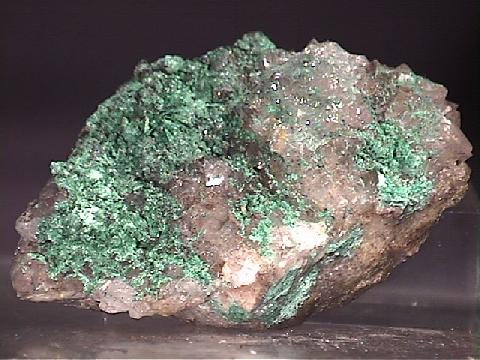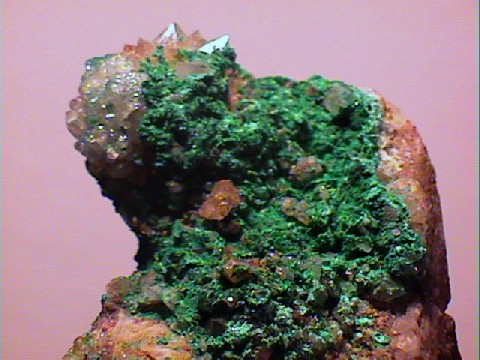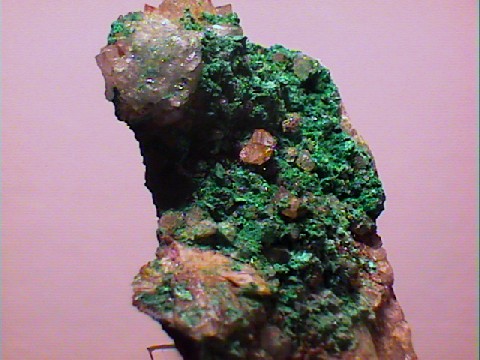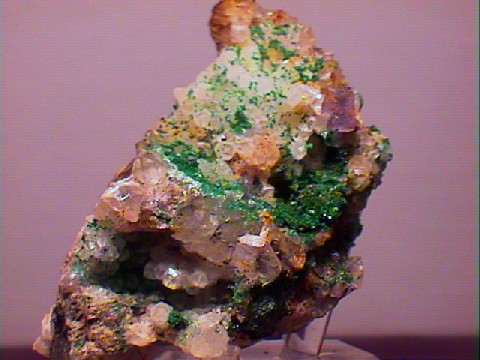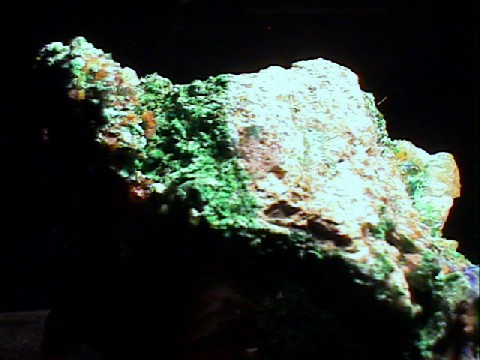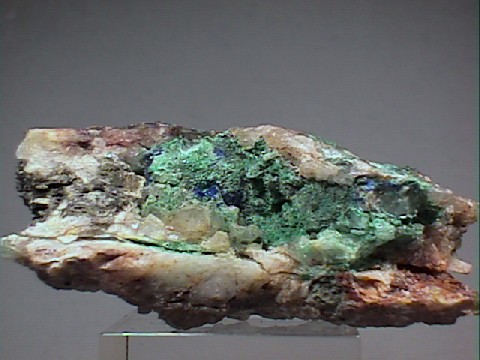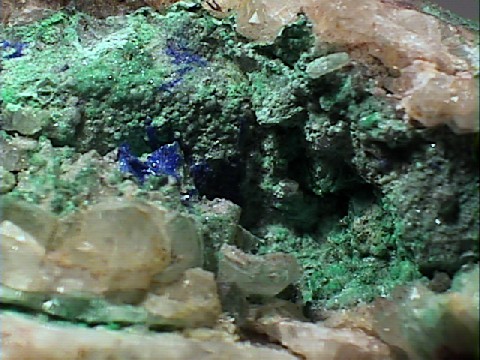 THE MINERAL ANTLERITE
THE MINERAL ANTLERITE
- Chemistry: Cu3SO4(OH)4, Copper Sulfate Hydroxide.
- Class: Sulfates
- Uses: A minor ore of copper and as mineral specimens.
Specimens
Antlerite is similar to other green copper minerals that form in oxidation zones such as the carbonate mineral malachite, the halide mineral atacamite and the closely related sulfate mineral brochantite. This brings up a number of identification problems. Acicular malachite will effervesce in warm hydrochloric acid and antlerite will not. Atacamite is slightly softer and is usually less transparent. Brochantite is all but indistinguishable by ordinary means although its terminations are typically more rounded than the terminations of antlerite.
PHYSICAL CHARACTERISTICS:
- Color is a bright emerald green or dark green to almost black.
- Luster is vitreous.
- Transparency: Crystals are transparent to translucent.
- Crystal System is orthorhombic; 2/m 2/m 2/m
- Crystal Habits include small tabular crystals and acicular or fibrous crystal aggregates that form into coatings and tufts. Also found in veins and as reniform, massive or granular specimens.
- Cleavage is perfect in one direction and poor in another.
- Fracture is uneven.
- Hardness is 3.5
- Specific Gravity is approximately 3.9 (above average for translucent minerals)
- Streak is pale green.
- Other Characteristics: Does not effervesce in hydrochloric acid and crystals can be vertically striated.
- Associated Minerals are limonite, brochantite, cuprite, malachite, gypsum, chalcanthite, atacamite and azurite.
- Notable Occurrences include Chuquicamata, Chile; Mexico and the Antler mine (from where it gets its name) and Bisbee, Arizona, Nevada, California, New Mexico and Utah, USA.
- Best Field Indicators are crystal habit, associations, hardness, cleavage, non-reaction to hydrochloric acid and color.

